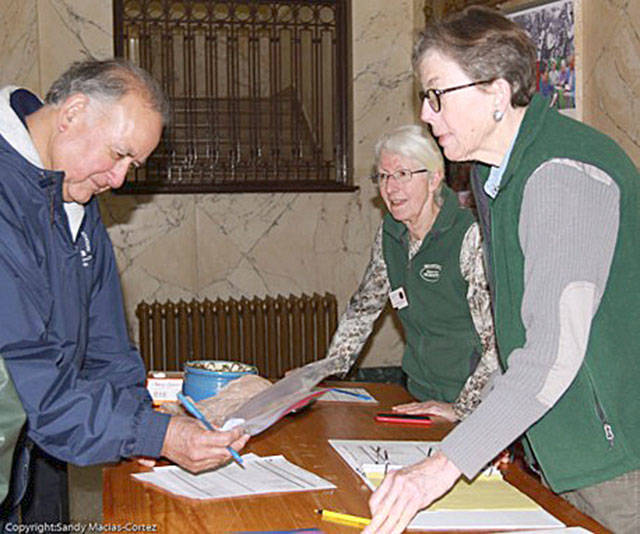Get involved
The Thursday “Brown Bag’ series will feature a presentation by Elaine Webber, Master Gardener, on “Roses.” This will be held at the Clallam County Courthouse from noon-1 p.m. on May 24. The presentation is open to the public and is free of charge, but donations to help support the program are appreciated.
The Plant Clinic will reopen at the Woodcock Demonstration Garden in Sequim on Saturday May 26 from 9:30 a.m.-12:30 p.m. The plant clinic is an opportunity to get help solving gardening problems. A variety of topics such as plant identification, pest and disease control, and vegetable gardening are addressed by the Master Gardeners.
The Annual Garden Tour is just one month away. Mark your calendar for Saturday, June 23. Save the date for this popular event!
My plant doesn’t look so good; how can I figure out what’s wrong with it? Here is an approach to diagnosing the situation. Examine your plant and nearby plants and answer these questions.
The first step is to define the problem. What plant or type of plant is it? What does a healthy plant look like? What problems are common to that plant/plant type?
Next, look at nearby plants and examine your plant. Do nearby plants have some of the same symptoms? What’s different with your plant? Which part of the plant is damaged? Be sure and compare the damaged area to a healthy area. Look for patterns. Is only a single plant affected or only one part of your plant? What part of the plant is affected (leaves, stems, roots, fruit, flowers). Is the damage uniform (on several plants or all over on your plant) or non-uniform (on only a few plants or only on one particular area on your plant)?
Consider timing: When did you first notice the problem? Did the damage occur suddenly or has it developed over time? Is the problem spreading?
Examine the plant’s cultural and environmental history. How long has the plant been planted? How was it planted? Any soil amendments used? Think about the planting method and any special care given over the first few weeks or months. How often and how long do you water? Does the water drain or pool? Remember the symptoms of over watering and under watering are pretty much the same, that is wilted, yellowing leaves.
Where in your landscape is the plant and what was in that location before? Any changes in the amount of sun in that area? Any construction or recent landscaping changes at the site? As landscapes mature, micro-climates often change and environmental conditions may be less favorable after the change.
Have any chemicals been used near the plant, not just by you, but by your neighbor or the road department? Has there been any soil disturbance near or around the plant? How about mowing or weeding near the plant?
What has the weather been like over the past few months? Compared to last year? This helps to identify if the plant is reacting to a long-term change in its growing conditions.
The answer to these questions will help decide whether the cause of the problem is a living factor (insect, disease, mites, or other animals), or a nonliving factor (mechanical, physical, chemical or cultural). Typically, damage from living factors is progressive with time and starts at one spot and spreads on your plant and to other nearby plants. Damage from nonliving factors usually occurs at a given point in time, does not spread with time, and occurs on more than one plant.
Bring your answers to these questions to a Master Gardener Plant Clinic and we will help you determine which of the living/nonliving factors is the cause of the problem; then, we can recommend appropriate control measures.
Finally, the most important thing you can do to solve plant problems is to be ever-vigilant for them. The sooner you detect a problem and figure out what is causing it, the more successful you will be in saving the plant for another day.
Bill Wrobel is a certified Clallam County Master Gardener. He has been a Master Gardener since 1984, in Oregon, Louisiana and Washington state.


